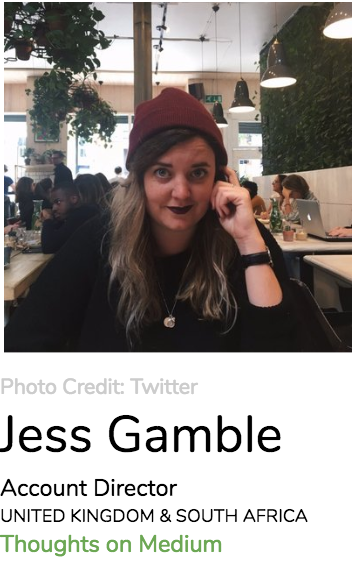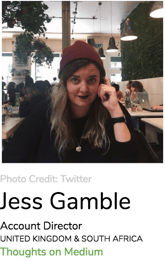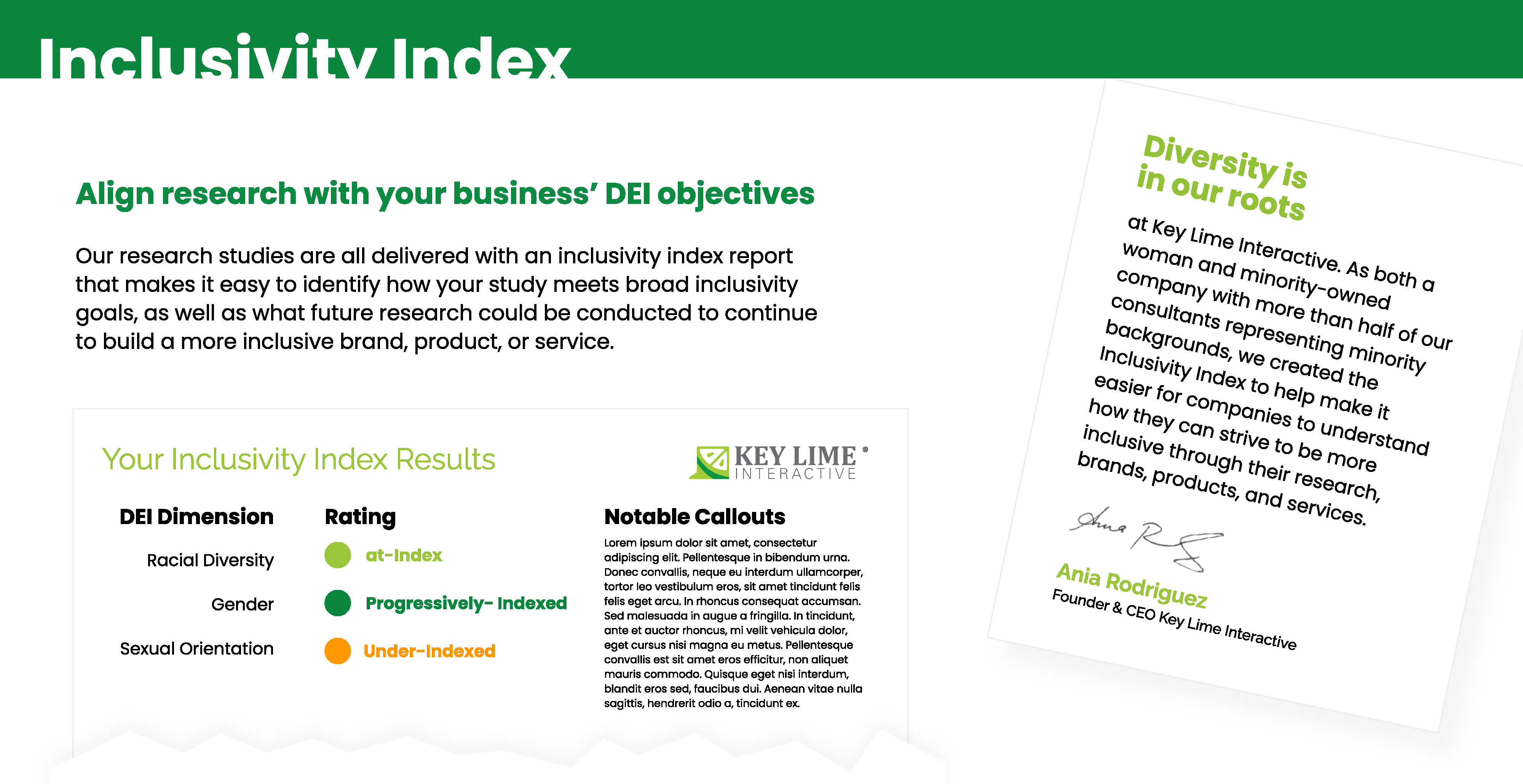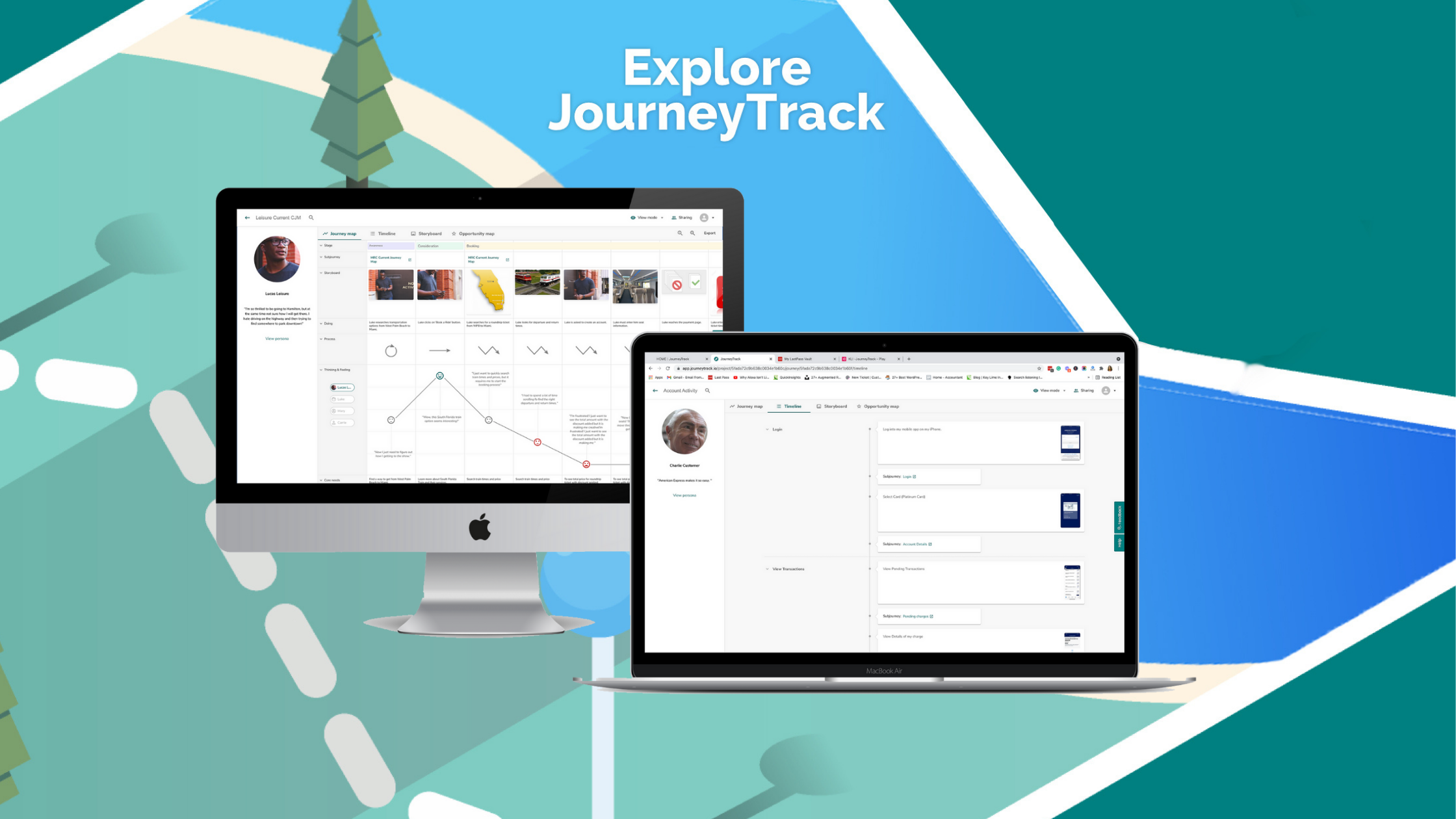
 Being a full-service UX research agency, Key Lime employs researchers take pride in wearing many hats. The versatility of our researchers is what allows our staff to be nimble and adaptable in tailoring our services to every client. Part of training at Key Lime includes brushing up on skills that haven’t been flexed in a while or might benefit from being strengthened. Last week, our researcher Mindy Eng spoke withJess Gamble, a client relationship management expert, about her pro-tips as an account director working with clients around the world.
Being a full-service UX research agency, Key Lime employs researchers take pride in wearing many hats. The versatility of our researchers is what allows our staff to be nimble and adaptable in tailoring our services to every client. Part of training at Key Lime includes brushing up on skills that haven’t been flexed in a while or might benefit from being strengthened. Last week, our researcher Mindy Eng spoke withJess Gamble, a client relationship management expert, about her pro-tips as an account director working with clients around the world.
Mindy: Thank you, Jess, for bringing your thoughts to the table with us today. I found Jess’ Medium article on account management and just had to have her come to share her perspective on how we should engage with clients and the types of communication clients do and don’t appreciate. As UX researchers who come from a diverse array of backgrounds, there is so much to learn about client management from Jess.
Jess: Thanks, Mindy. It's great to be speaking to the team today, and I'm really happy that you found my article on Medium. I think many jobs have elements of client management, so it's a really important skill for all of us to learn, and I think it's a skill that we need to keep tuning and looking to improve.
Over the years, I've had the pleasure of working with some amazing people who have been great mentors and have taught me so much, especially about client management. The overarching biggest realization I've had is that you build relationships with your clients just like you build any other relationships in your life, and I think that was a turning point for me.
Mindy: In your Medium article, you mention building relationships and building trust some of the keys to success. I really loved the way you phrased it actually. You said that one of the first things to remember for people new to the agency ecosystem is that we are dealing with many clients every day, but clients are only dealing with us.
In a lot of our work as researchers, what we strive to do is make sure user experience research becomes a core part of a client’s product development lifecycle, so we can make sure their products are serving real needs of real people. What this usually takes is transitioning from being “just another vendor” to a “trusted partner”. In your opinion, what sets apart your average vendor from a trusted partner? What are some impressionable moments over the course of a project that really showcase to clients the difference between how an average vendor responds to a client and how a trusted partner responds to a client?
Jess: Well, that is quite a multi-part question, but I think what you touched on first, about how for all of our clients there's only one of us, but for us, we have many clients, is a really important thing to remember.
When a client is asking us a question, they're really trusting us for an answer. I think it's best for us to state our intentions at the beginning of any client engagement. Tell clients right at the beginning that we're looking to be a trusted partner and to work with them and that we're not really interested in being just another supplier. Saying that at the start really sets the tone for the whole relationship, but I also think that transitioning to being a trusted partner does take some time and effort.
It really does involve ensuring that you see things from your client's point of view. You also need to understand their business objectives and how well all of the bits that you're working on with them affect these objectives, or maybe works towards them. Only then can you ensure that any advice, guidance, or work that you do for your client is in line with their objectives. That means knowing how to work with your client towards achieving their own goals.
In terms of impressionable moments, quite a few came to mind. In general, the main thing is not just to be a "yes" person or "yes" agency. If you just say "yes" to any request that your client comes to you with, and you don't think about how it is going to affect their overarching objectives or their goals, you're not really helping them. You shouldn’t push back on everything, but you should think about what your client is trying to achieve every time you receive a new client ask, and give them the guidance that will best help them achieve that goal. If you think that they've asked you for task X, but you really think that another approach or tactic will get them closer to their goal, you should let them know.
The thing that's key to remember is that our clients are working with us as experts in the industry, and they're looking for expert advice.
Mindy: One of the things you really emphasize in your Medium article is the importance of communication. I think you had put it perfectly. You said: “When it comes to your clients, there is no such thing as over-communication. No client has ever complained that we’re too good at keeping them up-to-date or informed about their project. Even if they’re not replying to every email, they still need to be kept updated. Keep them in the loop about everything.” Tell us more about the types of communication you find clients do (and don’t) appreciate when it comes to meetings and emails.
Jess: Sometimes you need to work with a client for a little bit before you can figure out what communication styles they prefer. For example, if I'm always sending an email to their clients, and they're always responding by picking up the phone and calling me, then I'm like, "Okay cool, they probably prefer a phone call, and maybe I should just do that."
I do think it's important to adapt to your client. You can’t just create a blanket rule and be like, “All clients are the same, and we will communicate with them all in the same way.” It's important to have a process, so maybe your process includes updating your client once a week and depending on the client, the medium that you use to update them is slightly different.
Another pro-tip: Clients appreciate an acknowledgment of your receipt of their email or a message even if you can't give them an answer or update straight away. For example, if they've sent you an email with a really complex question and you know it's going to take three days and two internal meetings before you're going to get the answer to that, definitely don't wait three days before replying to them. Just share an acknowledgment like, "Hi John. Thanks for your mail. I'm going to chat with the team internally, and we'll get back to you by Thursday." Make sure that you do include a time frame, and a reasonable one, just so that they know when to expect a reply from you. It also means that your client doesn't chase you for an update which is a situation you should never be in.
Also, don't be afraid to just pick up the phone. It’s a really quick way to get an answer or give an update. It's also a great way to follow up if some of your emails haven't been answered. Unfortunately, you don't know how busy your clients are or what else they're doing or what else is flooding their inbox, so if you need an answer straight away, especially if it’s something that is going to affect a bunch of things on the project, just pick up the phone.
Lastly, important to know that it's nearly impossible to read tone in an email. A lot of people get upset or offended or think that a client is being unreasonable because what's being said in their email reads a certain way. However, the client could not have meant it that way, or they may have just been really busy. It's just really hard to read. What I find is if you're not sure what's being said or how it's being meant, just ask. If you're really concerned about the tone of the email, try to pick up the phone because I find that while clients can give harsh feedback over email, they're normally a lot nicer about it on the phone. If you're concerned that you've misread the tone, you'll really easily be able to clear that up in a phone call.
Mindy: You mention that a very important part of building relationships with your clients is never to miss your deadlines. At the end of the day, unfortunately, our researchers are not accounting managers nor project managers. A lot of the time, they need to be able to be their own project managers. What advice would you give to our researcher's high-impact ways to empower themselves to hit deadlines and have open conversations about scope creep more effectively when it comes to client management?
Jess: So as much as I totally agree that we should never miss a deadline, we all know that these things do happen. A way to avoid that is to create project plans and set milestones. As soon as you miss your first milestone, you should flag that with a client. That that nicely leads me onto my next pro-tip, which is that you need to flag an issue whether it's scope creep, a delay in a project, or anything like that. You need to flag it to your client as soon as you realize it's happening.
What often happens is that we realize is going to be a delay, and we try our best to deliver everything on time, but we know we're not going to make it. Then, we tell a client like on the day they're expecting something that actually it's not going to be there. Unfortunately, that just doesn't build any trust at all, so you absolutely need to flag issues as soon they come up. If there's a particular reason why you're not hitting a milestone, you need to talk to your client as soon as possible.
Mindy: Would you be able to offer any tips on how to do this when working with more than a single client? What are easy ways to open into a tough conversation about scope creep and deadlines with a client without bogging them down with too many details, making them feel like we’re making things difficult, or bringing other clients into the picture?
Jess: This is always an interesting one for me because your client is not paying to be one of 17 other clients.
I think it's always important to give all clients a choice when possible. If a client asks for the addition of X to a project, which is actually scope creep, you can say, “Your deadline is going to be delayed by two weeks if we do do this addition of X, because we've planned our work for the month. If we don't add in this additional piece of work, we can meet the originally agreed deadline, so which would you prefer.” Clients don't always understand how specific our briefs are in our scope of work, or that we have already scheduled work for the rest of the month. As soon as there is creep in scope, you can say, "Actually, hey. This wasn't in the original brief, and therefore, we haven't planned for it." They can then decide whether they really wanted to be included or not, and then decide if that's something they're willing to have a delay for.
Sometimes the key thing to remember here is that your client is human. If a certain part of a project is taking a bit longer than planned because something unexpected came up, just tell them this. I don't think it's bad to tell them that something unexpected has happened as long as it's not an issue that you made a mistake on when scoping the project.
Clients are all human. They know that we're all human, and they know that we all make human mistakes. Just be as honest as you can, and maybe you both can work together to propose a resolution.
Mindy: Thank you so much for taking the time to share your perspective with us, Jess. You’ve given the team a lot of food for thought.
Jess: Thank you very much for having me, Mindy. It was great to speak to you all.
READ MORE: Interview With Our Four Quantitative Rockstars, Strategies for Usability Testing with VR, Designing for Millennials vs. Baby Boomers, The Social Experience of Digital Reality Use
READ MORE: Interview With Our Four Quantitative Rockstars, Strategies for Usability Testing with VR, Designing for Millennials vs. Baby Boomers, The Social Experience of Digital Reality Use










Comments
Add Comment